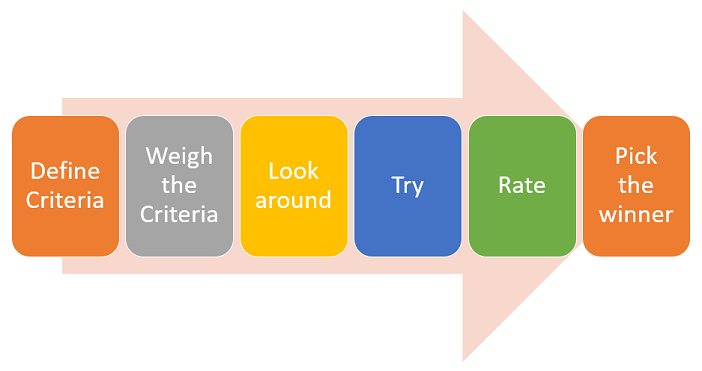I’ve noticed that the process of choosing the best automation testing tool for a project is not always clear. So I’d like to shed some more light on it. The process (Choose the Best Testing Tool) should look like this.
1. Define a list of criteria
Define a list of criteria that your ideal Test Automation framework should meet such as supported automation platforms (desktop, web or mobile?), usability, maintainability, stability, ease of debugging test failures, ease of integrating test automation into a CI/CD pipeline, first-class Docker support, budget/pricing, etc.
2. Weigh the criteria you selected
Which criteria are more desirable and which annoying problems you can live with in the long run? Look around (especially for tool listing articles), and pick at least 3 good Test Automation frameworks that closely match your criteria considering your current situation.
3. Try
Try building a workable framework if you picked open-source solutions like Selenium, Protractor, Cypress, etc. or ask for a demo if you‘re evaluating commercial solutions like UFT, TestComplete, TestArchitect, Ranorex, etc. When you’re at it, pay special attention to the criteria you already listed out. Some call this stage a POC (Proof of Concept). Rate each tool on the scale from 1 to 10 for every criterion you selected. Then compute the score of each tool considering the weight of each criterion. Make sure you’re being fair and your rankings are transitive (if toolX > toolY and toolY > toolZ, toolX must be superior to toolZ).
4. Pick the best tool
Voila! Pick the best tool that got the highest score. No brainer!
Hopefully, this weighted-decision method can help you pick the best software testing tool for automated testing. Leave a comment or contact me if you have anything to add on on how to Choose the Best Testing Tool.
